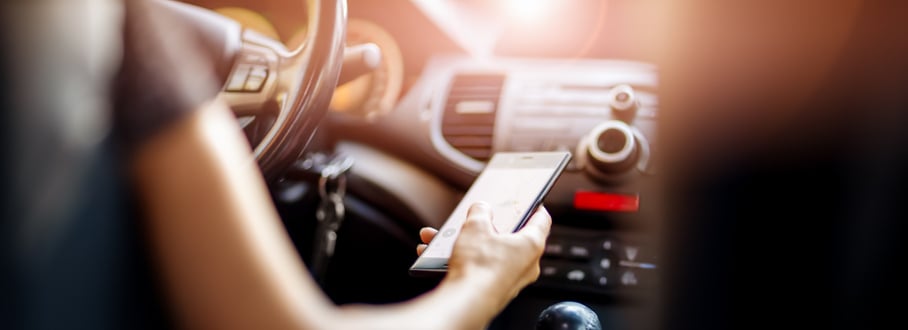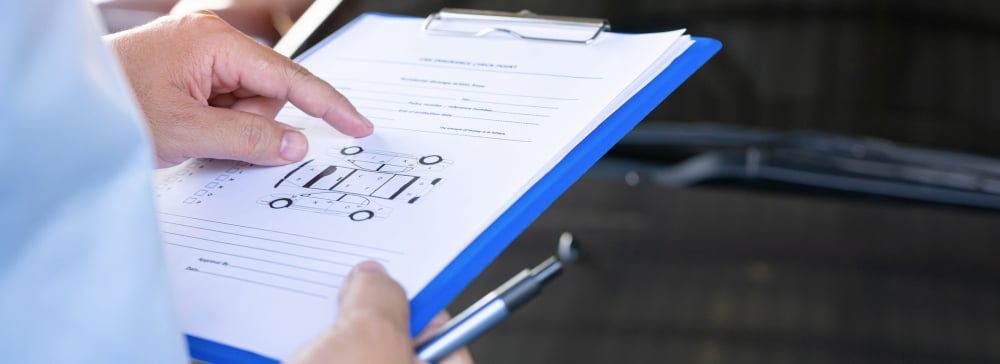Table of Contents

Distracted driving accidents are nothing new: when radios were put into cars, highways saw a marked increase in injuries. Since then, the number of potential motorist distractions has grown as both our phones and environments have developed increasingly sophisticated ways to compete for our attention.
Calls, texts, and other functions of smartphones, along with other forms of distraction, can combine to delay a driver’s reaction and cause an accident. When this happens in Martin County, victims of a distracted driver’s negligence have the right to pursue compensation from the at-fault party to cover the cost of the injuries and losses.
Speaking with a Stuart distracted driving accident attorney at Kogan & DiSalvo can help to clarify what can be a confusing, frustrating, and high-stakes process. Call for a free consultation.
In its aptly-named article Why Multitasking Doesn’t Work, the Cleveland Clinic outlined how human beings are natural monotaskers and that only about 2.5% of people can actually multitask – the rest of us are just rapidly switching our attention between tasks. This negatively impacts the performance on both tasks, which can lead to an accident when one of those tasks is driving.
While several distractions can combine to cause an accident, some tend to become a factor more often than most. These include:
The seriousness of the injuries resulting from an accident will depend on many factors, such as the health of the occupants before the accident, the size, weight, and traveling speed of the vehicles involved, and what type of accident occurred.
For example, a T-bone collision is inherently more dangerous than a typical sideswipe accident. This is because a T-bone includes the front end of a vehicle striking the side of another vehicle, and the panels of a car or truck are prone to being crumpled inward. This can lead to occupants being hit with jagged, crumpled metal from the panel, broken glass from windows, and the front end of the striking vehicle. Sideswipes, meanwhile, occur when the side of two cars strike each other, typically when merging lanes, and usually results in relatively minor damage from a low impact.
Although each type of collision tends to produce specific injuries, and certain individuals are more prone to particular injuries, some of the most common injuries from distracted driving accidents in general include:
As the everyday use of the word implies, negligence typically involves unreasonably reckless behavior, though the legal definition of negligence involves a very specific test. This test consists of analyzing duty, breach, and causation, which typically breaks down like this for distracted driving cases:
Though this seems straightforward, it can quickly get nuanced and complicated. For example, being reasonably distracted, such as having to swerve to avoid a hazard in a way that was reasonable under the circumstances which then caused an accident, would likely not be negligent. However, if the hazard was another driver answering their phone, the direct, proximate cause would likely be the distracted driver who necessitated the reasonable driver to swerve to avoid them.
Additionally, there can be several people or organizations liable, such as a private employer in the case of a trucking accident, or a local government in the case of an accident caused by a distracted sanitation worker while working. These and many other nuances are why it is often best to speak with a distracted driving injury lawyer with expertise in this particular area of the law.
Once negligence has been established in a lawsuit, a court will then analyze damages, or the losses suffered by the injured party.

The damages in a negligence lawsuit for distracted driving include economic, non-economic, and punitive. Economic damages are tangible, such as bills. Noneconomic damages are intangible, such as the value of the pain someone suffers. Punitive damages, also known as exemplary damages, are to punish a party that acts particularly badly and make an example to deter others from similar behavior.
Economic damages can include:
Non-economic damages can include:
Florida is a modified comparative negligence jurisdiction. This means that, if an injured individual is found by a judge or jury to be more than 50% responsible for their own injury, their recovery of damages will be barred completely. If they are found to be 50% or less responsible, but still responsible to some degree, their recovery is reduced in proportion to their fault. For example, if a court determines that a plaintiff is 40% responsible for their injury, they can still recover 60% of their damages. By contrast, if a court determines that a plaintiff is 55% responsible for their injuries, they cannot recover at all.
The first step after any accident is to secure the safety of all involved, such as having everyone move out of the way of traffic or away from other hazards if possible. If anyone is injured, call emergency medical services.
Once that vital first step is taken, it’s time to start documenting. This includes:
Later, collect all of your medical bills and other bills related to the crash, as your lawyer will use them along with medical diagnoses to project what future expenses may include. This will help to prove damages, which will be the award in a negligence lawsuit. Should litigation be necessary, there will be a discovery process, where each side will be able to ask for documents from the other.
Florida law requires a claim for negligence, the most likely cause of action for a distracted driving accident, to be filed generally within two years of the accident. In the tragic event of a death from an accident, the decedent’s personal representative will have two years from the date of the death of the decedent to pursue a wrongful death claim.
If these cases are filed after the statute of limitations has run, they will most likely be dismissed.

Negotiating with insurance companies and deciding whether to accept a settlement offer, make a counteroffer, or go to litigation, can be daunting. If you were injured in an accident in Martin County, an experienced Stuart car accident lawyer at Kogan & DiSalvo can help consult on your legal options.
If you are injured and unable to come to us,
our attorney will come to you - there is no charge for us to do so.